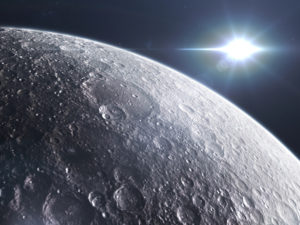
Horizontal drilling for geothermal energy can produce enough electricity to power 20 million homes for a few thousand years at only 10 cents a kilowatt per hour, that’s less than Texas, paid for electricity in 2019.
Yellowstone National Park is sitting on a caldera that if harnessed, could power much of America for generations. Ignoring it means a guaranteed eruption and the destruction of a great portion of the US and Canada.
The energy in the Yellowstone caldera is carbon free but the reason why it has never been extracted is because of the Geothermal Steam Act of 1970. The law was designed to encourage the use of geothermal energy production, but it categorically excluded national parks from development. The technology available at the time would have destroyed parks’ ecosystems. Now geothermal methods have drastically improved over the last 50 years. Horizontal drilling can be used to reach energy sources miles from where the well is bored into the earth, almost completely elimination the ground-level impact directly above geothermal resources.

In 2017 scientists at NASA’s Jet Propulsion Laboratory evaluated the caldera’s energy flows as well as the potential damage and probability of a super-volcanic eruption, which has happened at Yellowstone three times previously. The last eruption was 631,000 years ago; the one before that was 669,000 years prior. It’s not a matter of if it will erupt but when. The JPL found that the devastation of an eruption would exceed that of an asteroid 1 ½ miles wide crashing to Earth.
In 2014 the U.S Geological Survey modeled the likely ash distribution from a Yellowstone super-eruption. They found that the ash radius would reach New York, with as much as 3 ½ inches of ash falling as far east as Lincoln Nebraska. Cropland across the U.S and Canada would be destroyed, and the release of sulfate aerosols into the air would create a global” Volcanic Winter” lasting generations. Fortunately the JPL s solution is horizontal drilling for geothermal energy extraction-that would siphon off excess energy, producing enough electricity to power America for generations.
A volcanic winter would create global mass starvation and the effect on America of Yellowstone’s caldera erupting would be far worse. For the sake of everyone, Congress should amend the Geothermal Steam Act to allow the responsible extraction of energy from national parks. It may be the best way to ensure Yellowstone survives.
Geothermal energy exists in different forms all over the Earth (by steam vents, lava, geysers, or simply dry heat), and there are different possibilities for extracting and using this heat.
In New Zealand, natural geysers and steam vents heat swimming pools, homes, greenhouses, and prawn farms. New Zealanders also use dry geothermal heat to dry timber and feedstock.
Other countries, such as Iceland, have taken advantage of molten rock and magma resources from volcanic activity to provide heat for homes and buildings. In Iceland, almost 90% of the country’s people use geothermal heating resources. Iceland also relies on its natural geysers to melt snow, warm fisheries, and heat greenhouses.
The United States generates the most amount of geothermal energy of any other country. Every year, the U.S. generates at least 15 billion kilowatt-hours, or the equivalent of burning about 25 million barrels of oil. Industrial geothermal technologies have been concentrated in the western U.S. In 2012, Nevada had 59 geothermal projects either operational or in development, followed by California with 31 projects, and Oregon with 16 projects.
The cost of geothermal energy technology has gone down in the last decade, and is becoming more economically possible for individuals and companies.
https://www.nationalgeographic.org/encyclopedia/geothermal-energy/
https://www.greenmatch.co.uk/blog/2014/08/is-the-uk-harnessing-its-geothermal-energy-resources
The source for most of the information in this blog is from an FT article by Jacob R. Borden former principal engineer for BP’s alternative energy unit.



